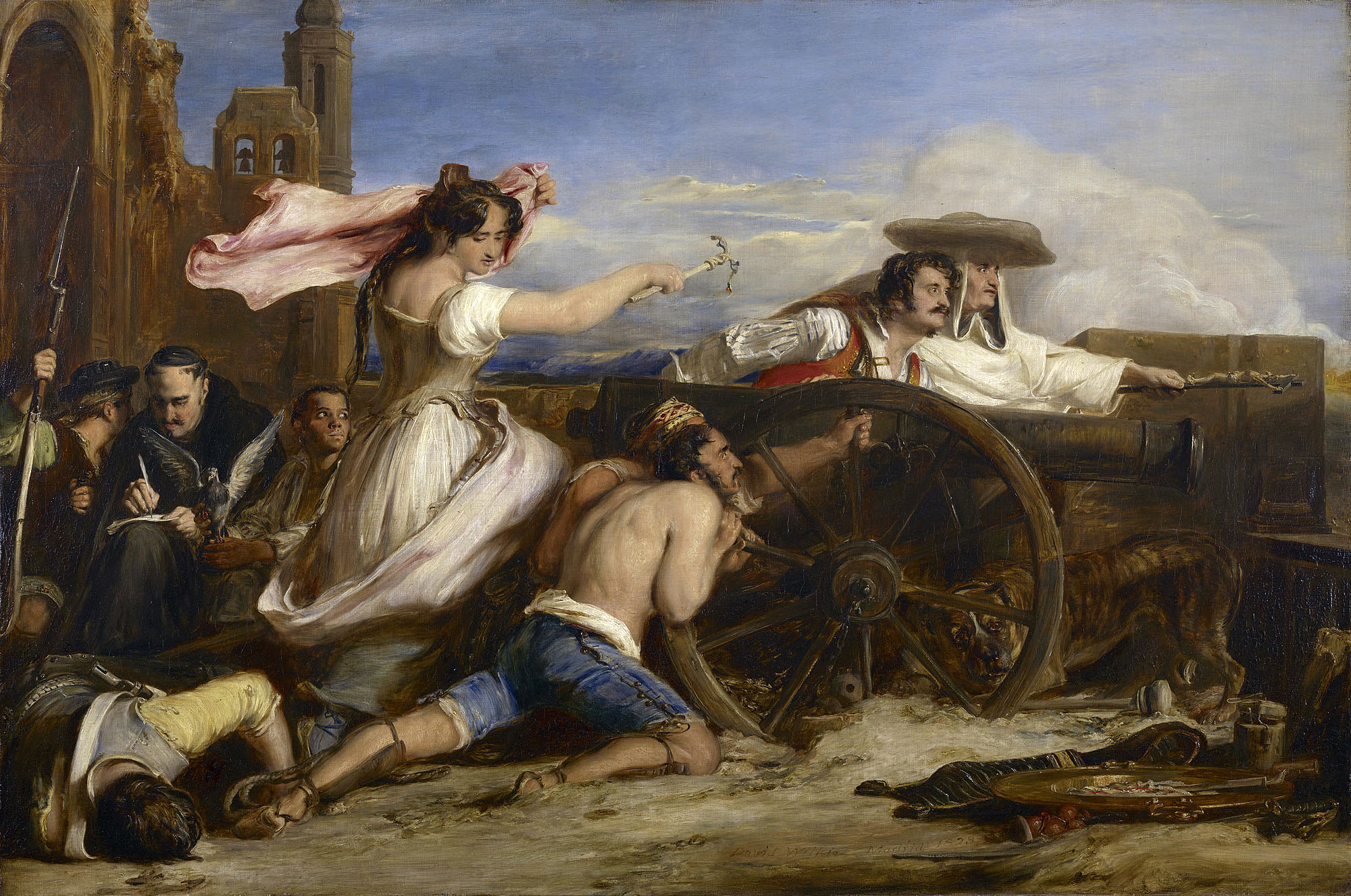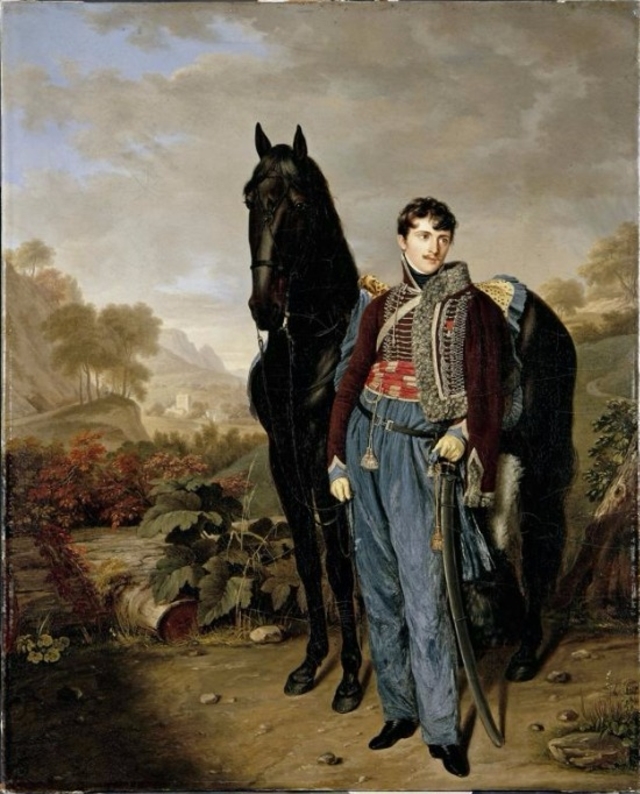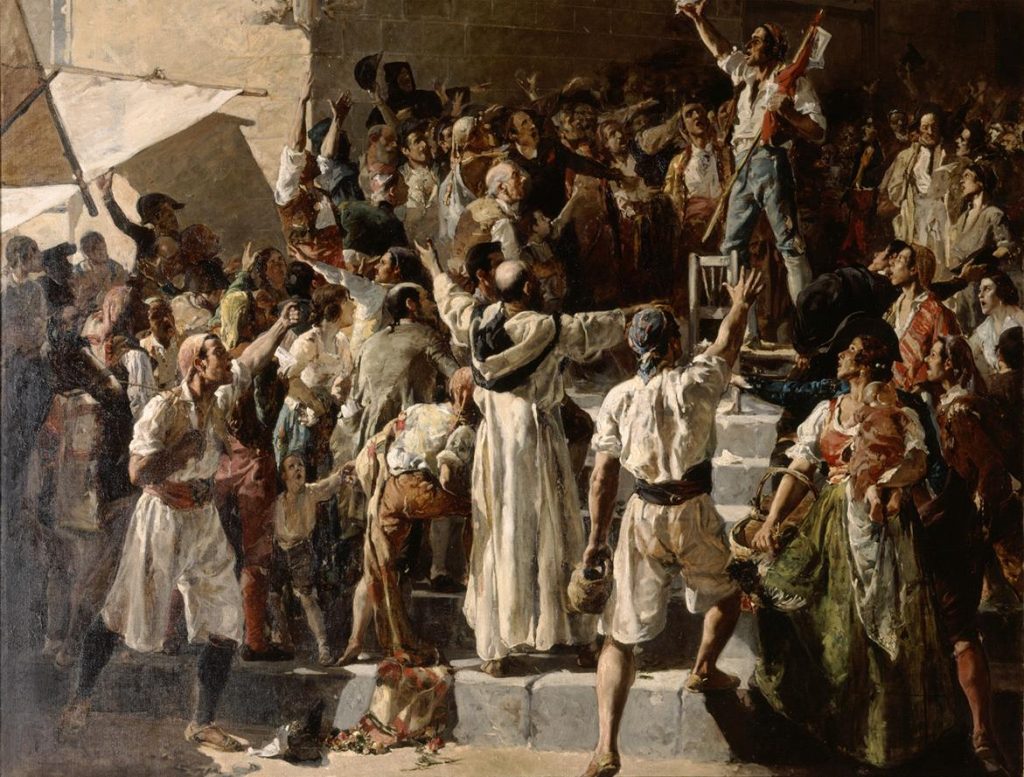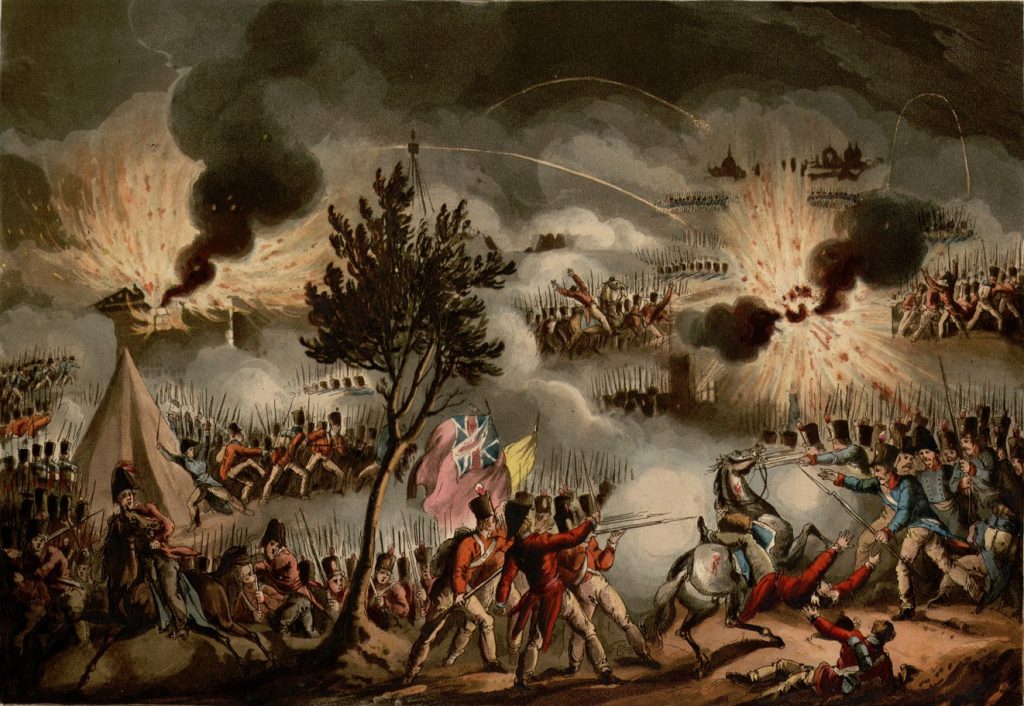
Agustina, the maid of Aragón, fires a gun on the French invaders. Artwork by David Wilkie, 1828
Most memoirs by French officers who took part in the Napoleonic occupation of Spain lauded their victories and achievements on the battlefield with the exception of Albert-Jean Michel de Rocca (1788-1818), a lieutenant who served in the French Army until 1810 when he was injured and forced to hobble back to France on the most dangerous stretch of road in the war.

Rocca’s 1815 Memoirs of the War of the French in Spain chronicles the treacherous journey between Madrid and Bayonne, France – the path most French soldiers entered and left the peninsula. It is a grim account of the animus felt by the Spanish people towards their occupiers, and unlike his contemporaries, Rocca commented on the ineffectiveness of French counterinsurgency efforts in a conflict that after 1809 had escalated into a nation-wide guerrilla campaign lasting until the last French soldier retreated over the Pyrenees in 1813.
Small Garrisons: Strategies and Challenges
On the unconventional nature of the war, Rocca wrote that the “garrisons which they had left on the military roads to keep the country in check, were constantly attacked” by insurgents. Small garrisons in towns and villages were especially vulnerable. The desperate solution was to mimic previous strategies employed by Iberia’s earlier invaders by constructing “little citadels for their safety by repairing old ruined castles which they found on the heights, and these castles were frequently, Roman or Moorish remains which, many centuries before, had served the same purpose.” Despite their efforts, French soldiers unlucky enough to be stationed in rural outposts were reluctant to patrol beyond their immediate vicinity:
Thus the terror of our arms gave us no influence around us. As the enemy was spread over the whole country, the different points that the French occupied were all more or less threatened; their victorious troops, dispersed in order to maintain their conquests, found themselves, from Irun to Cadiz, in a state of continual blockade; and they were not in reality masters of more than the ground they actually trod upon.[1]
Rocca also addressed how the insurgency made every Spaniard a potential threat – which took its toll on French morale. “This sort of warfare, where there was no fixed object upon which the imagination could dwell, damped the ardor of the soldier, and wore out his patience.” The combination of low morale and supplies resulted in a perfect blend of despair. Rocca noted that French soldiers “could only maintain themselves in Spain by terror; they were constantly under necessity of punishing the innocent with the guilty; and of taking revenge on the weak for the offenses of the powerful.” In addition to terrorizing the people – a policy directed from Napoleon himself which percolated down through the ranks – the widespread practice of forced contributions only made matters worse because it fueled a preexisting hatred among the Spanish for the French, who local priests and clergymen excoriated as godless and worse than the invading Moors centuries earlier.

Rocca believed that the Spanish “national hatred which existed against the French had produced a sort of unity in the undirected efforts of the people, and to regular warfare had succeeded a system of …organized disorder which suited the fierce spirit of the Spanish nation…”[2]
Surviving the Perilous Journey
Due to an injury from his horse landing on his leg, Rocca was granted leave by a Board of Health that normally “had received the strictest orders to grant no furlough to any officer…” Unlike the memoirs of French generals and marshals who refused to own up to the disastrous nature of the occupation, Rocca admitted that he was “glad, at any price, to quit an unjust and inglorious war, where the sentiments of my heart continually disavowed the evil my arm was condemned to do.” Rocca left Madrid with a caravan of other wounded officers under escort of seventy-five soldiers travelling north on roads that had once been alive with commercial activity and travelers. The contrast was stark. “On the long and silent road no single traveler ever met our sight…” Rocca also noted that “every two or three days a convoy of ammunition, or an escort met and joined us, to lodge in the ruins of deserted dwellings, whose doors and windows had been carried off to furnish as firewood for the French army.” The battered veterans made their way along the road stretching through the exclusive hunting grounds of the war’s most formidable guerrillas. Many villages were abandoned. There was no usual “crowd of children and idle spectators” nor “strangers at the entrance of a country village,” he wrote, but “only a small French out-post, which, behind the palisade, would cry Halt! in order to reconnoiter us.” Other times when entering a village void of life, “a sentry would suddenly appear placed in an old tower, like a solitary owl among ruins.”[3]
As Rocca’s group limped closer to France, the effects after the second year of war were apparent. He passed beyond the unmarked borders of the renowned guerrilla chieftain El Empecinado, only to arrive in Espoz y Mina’s guerrilla kingdom of Navarre. “The nearer we approached France, the more danger we were in of being carried off by the partisans; at every station we halted we found detachments from different parts of the peninsula, waiting to march with us.”

The detachments were waiting because only large groups avoided being attacked by the guerrillas whose rule of war was to never confront numerically superior forces but rather vulnerable convoys when the opportunity arose. Rocca, at the gates of France, witnessed first-hand how the insurgency wore down the French army. “Battalions, and even whole regiments reduced to skeletons; that is, to two or three men only, were sadly bringing back their eagles and their banners” to their homeland. Rocca made it out of Spain at the end of July of 1810, and never returned.[4]
[1] Albert-Jean Rocca, Memoirs of the War of the French in Spain (London: John Murray, 1815), 190. See: Benjamin J. Swenson, The Dawn of Guerrilla Warfare: Why the Tactics of Insurgents against Napoleon failed in the US Mexican War (Barnsley, UK: Pen and Sword, 2023), xx–xxii, 18–22.
[2] Ibid. 187-194.
[3] Ibid 337-340.
[4] Ibid. 340-341. See: John Lawrence Tone, The Fatal Knot: The Guerrilla War in Navarre and the Defeat of Napoleon in Spain (Chapel Hill: The University of North Carolina Press, NC, 1995).
About the author
Benjamin J. Swenson is an assistant professor at Hoseo University in Asan, South Korea. He holds a PhD from Pompeu Fabra University in Barcelona, Spain, where his dissertation addressed Euro-American military history and the advent of guerrilla warfare and counterinsurgency doctrine in the nineteenth century. His work has recently appeared in the Journal of Military History, and his latest, The Dawn of Guerrilla Warfare, will be published by UK’s Pen & Sword in 2023. His hobbies include Viking sagas and chess.